Ontdek de collectie
Kunstmuseum Den Haag has a treasure chamber of over 160.000 pieces of art. Here we work on making the highlights from this collection available online.
Room 36
Global Wardrobe – The Worldwide Fashion Connection
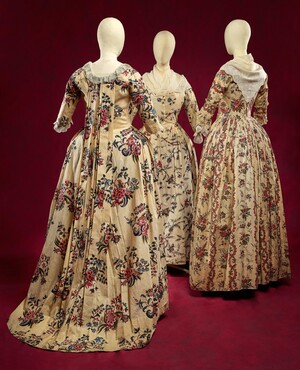
Dresses in European fashions made of chintz (painted and printed cotton) from India, c. 1780-1795, Kunstmuseum Den Haag
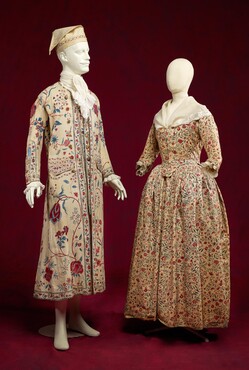
Left: Banyan with waistcoat, painted to resemble embroidery, c. 1780-1800, chintz and cotton. Right: Dress made of chintz, c. 1780-1790 (chintz c. 1750-1775), cotton, Kunstmuseum Den Haag
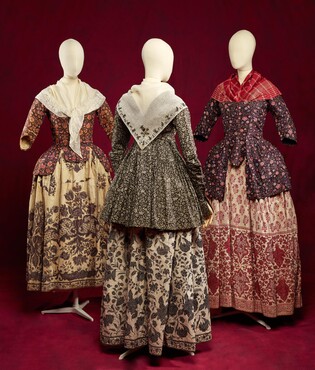
Three jackets and skirts made from Indian chintz, c. 1700-1775, cotton, linen and metal, Kunstmuseum Den Haag
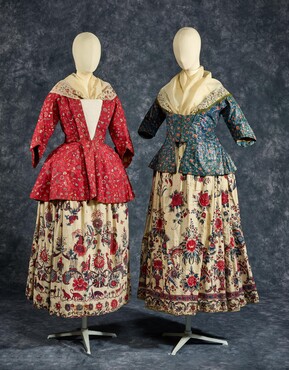
Two jackets and skirts made from Indian chintz, c. 1750-1780, cotton, linen and metal, Kunstmuseum Den Haag
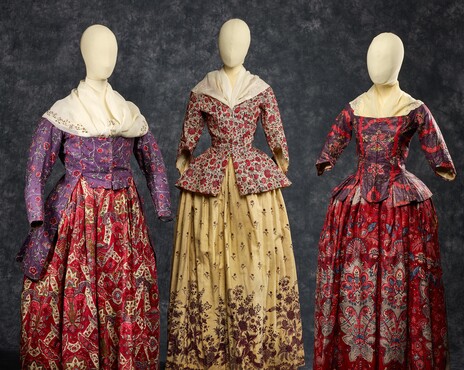
Three jackets and skirts made from Indian chintz, c. 1750-1799, cotton, linen and metal, Kunstmuseum Den Haag
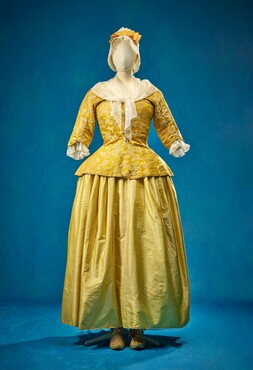
Jacket of Chinese silk damask (probably made from a Chinese garment), c. 1750, silk and linen, Kunstmuseum Den Haag
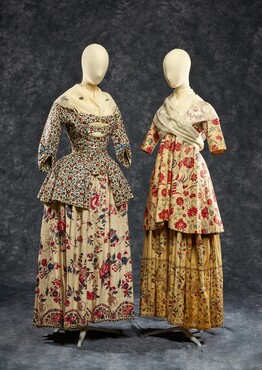
Two jackets and one skirts made from Indian chintz and one skirt with Indian embroidery, c. 1770-1820, cotton, linen and metal, Kunstmuseum Den Haag
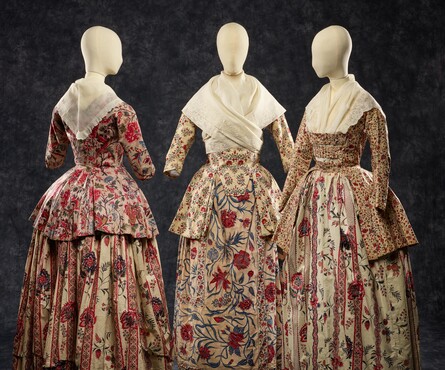
Three jackets and skirts made from Indian chintz, c. 1750-1780, cotton, linen and metal, Kunstmuseum Den Haag
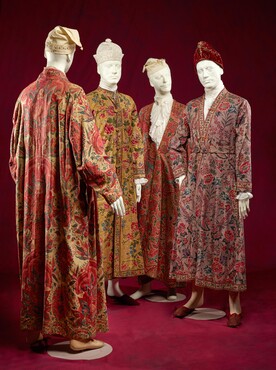
Four banyans (male), c. 1700-1750, chintz, cotton, wool, linen and silk, Kunstmuseum Den Haag
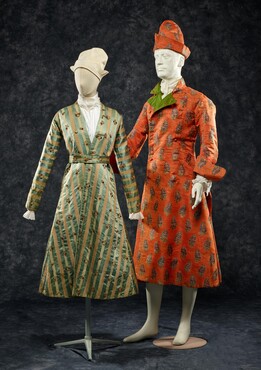
Left: Housecoat, c. 1750-1799, silk. Right: Housecoat and house cap, c. 1775-1800, silk and metal, Kunstmuseum Den Haag
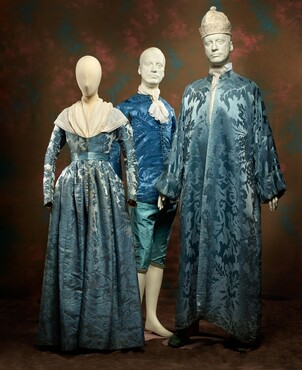
Left: Dress of Chinese silk damask (made from an older dress c. 1730-1750) c. 1797-1800, silk damask, linen and metal. Centre: Men’s waistcoat, c. 1725-1750, Chinese silk damask silk and cotton. Right: Banyan, c. 1750-1775, Chinese silk damask, Kunstmuseum Den Haag
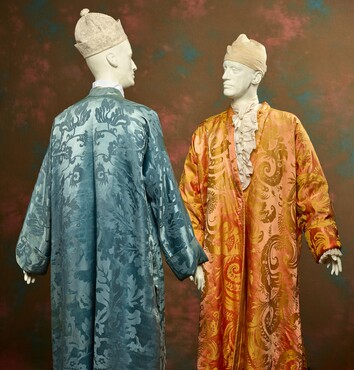
Two banyans (male) in kimono style made of Chinese silk and ‘bizarre’ silk, c. 1750-1775, Kunstmuseum Den Haag
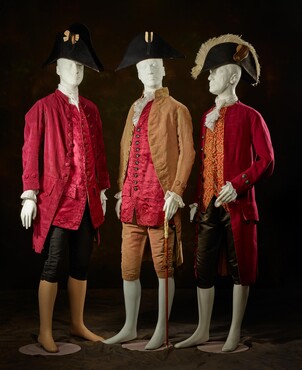
Two waistcoats of Chinese embroidered silk, c. 1750-1760 with jacket c. 1780, silk and habit à la francaise, c. 1785-1799, silk; man’s suit c. 1785-1799, wool, with accompanying waistcoat of printed silk, worn in Friesland, Kunstmuseum Den Haag
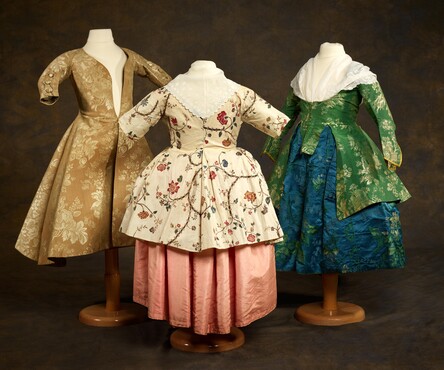
A boy’s silk jacket and two girls’ jackets, one of gold chintz and one of European (Dutch?) silk with Chinoiserie motifs, 18th century, Kunstmuseum Den Haag
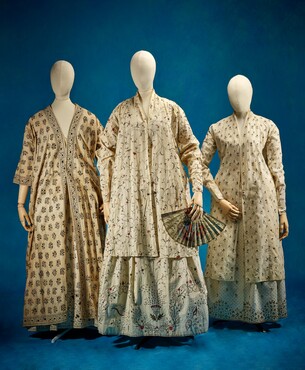
Three ensembles with long kebayas, embroidered in India, worn in Indonesia: Kebaya and skirt ensemble, c. 1785-1814, cotton, embroidered; Kebaya and skirt, c. 1800-1899, cotton, silk and metal thread embroidery; Kebaya and skirt, c. 1800-1814, cotton, metal thread embroidery, Kunstmuseum Den Haag
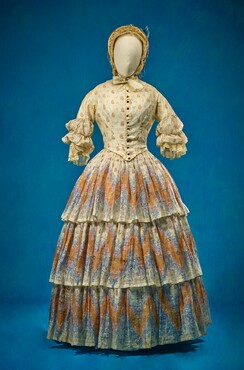
Dress, c. 1855, cotton and metal, Kunstmuseum Den Haag
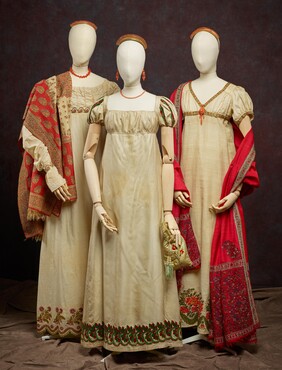
Empire dresses with embroidery in paisley motifs, inspired by the paisley motifs in the cashmere shawls, and cashmere shawls with paisley motifs. The origin of the cashmere shawl is India, early 19th century, Kunstmuseum Den Haag
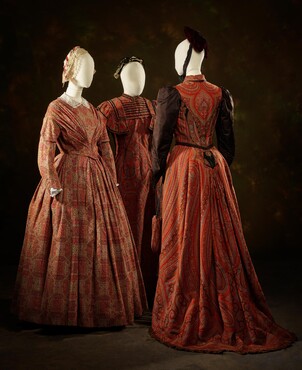
Three dresses made of European cashmere fabric, inspired by cashmere shawls: Dress, c. 1845-1850, wool, silk and cotton; Dress, c. 1898, wool and cotton; Dress, c. 1889-1890, wool and cotton, Kunstmuseum Den Haag
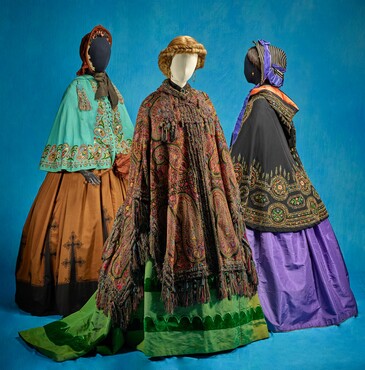
‘Burnous’ (cloaks inspired by the North African burnous) worn with fashionable female dress, c. 1850-1870, wool, embroidery, Kunstmuseum Den Haag
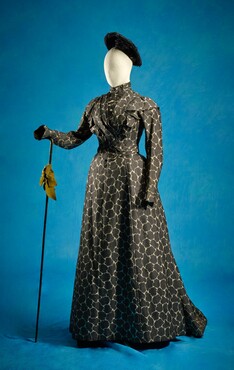
Dress, c. 1898, printed silk with asymmetrical motif, possibly Japanese-inspired, Kunstmuseum Den Haag
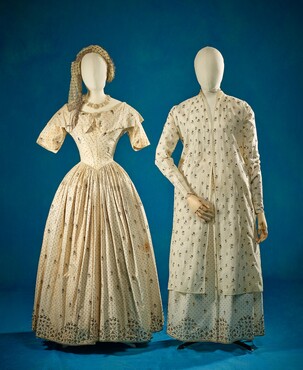
Left: Dress, c. 1840-1845, cotton, metal and linen. Right: Two-piece dress, made of an 18th-century kebaya set, c. 1845-1850, silk, cotton and metal, Kunstmuseum Den Haag.
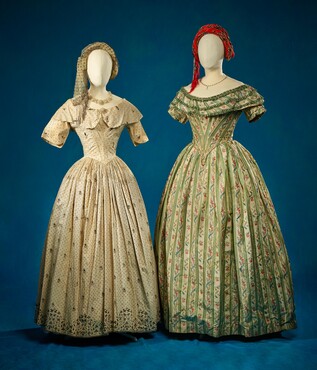
Worn with two fantasy turbans, c. 1843, Left:Dress, made of an 18th-century kebaya set, c. 1840-1845, cotton, metal and linen. Right: Two-piece dress, c. 1845-1850, silk, cotton and metal, Kunstmuseum Den Haag
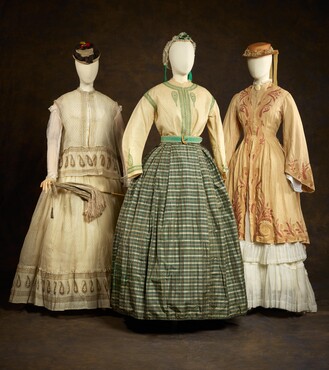
Left: Walking suit à disposition, c. 1870, cotton, glass and metal. Centre: Blouse, c. 1845, silk and wool, Skirt, c. 1860, silk and cotton. Right: Dress, c. 1871-1872, linen, Kunstmuseum Den Haag
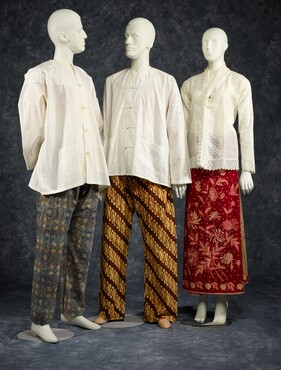
Two Chinese-style jackets and two pairs of batik ‘bed pants’, and batik kebaya and sarong with European motifs, c. 1890-1920, Kunstmuseum Den Haag
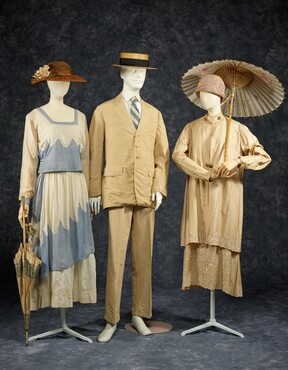
Left: Dress (tropics) from the Dutch East Indies, 1910-1914, cotton and metal. Centre: Suit (tropics) from the Dutch East Indies, c. 1916-1922, silk and cotton. Right: Ensemble from the Dutch East Indies, c. 1928-1930, Shantung silk, silk and metal, Kunstmuseum Den Haag
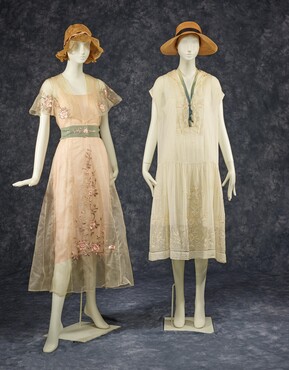
Left: Dress with Chinese embroidery, c. 1930-1934, silk, synthetic fabric and metal. Right: Dress (tropics), 1920-1923, French embroidery and cotton, Kunstmuseum Den Haag
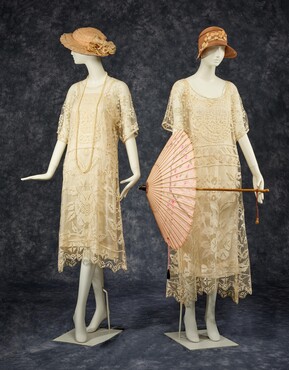
Dresses for the tropics, c. 1924-1927, cotton; c. 1924, cotton and Chinese lace, Kunstmuseum Den Haag
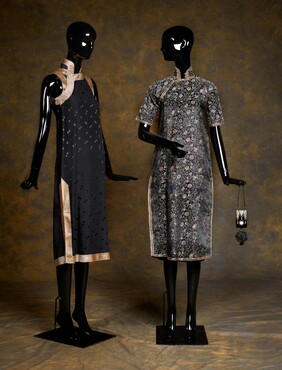
Left: Evening dress, c. 1932, silk, Kunstmuseum Den Haag. Right: Evening dress, c. 1932, silk and satin, Kunstmuseum Den Haag
